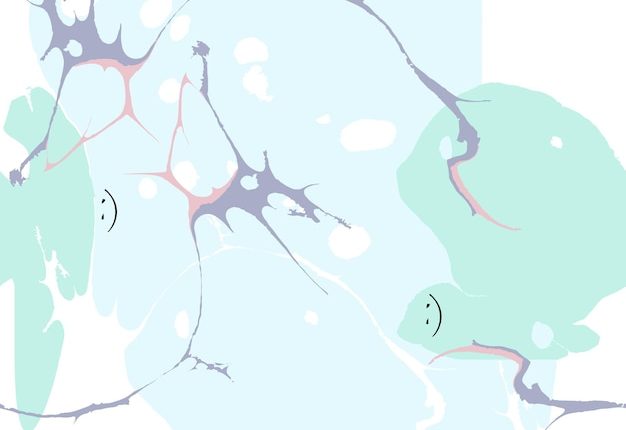A team of researchers, led by Paride Schito and colleagues, has developed a new composite scoring system aimed at improving the management and prognosis of patients with motor neuron disease (MND), a debilitating and often fatal neurological condition. Entitled “The Milan-Torin respiratory score (Mi-To-RS),” the study utilizes a combination of three critical respiratory tests: spirometry, arterial blood gas (ABG) analysis, and overnight oximetry (OvOx). The proposed scoring system seeks to streamline the approach to respiratory care in MND patients, potentially allowing healthcare providers to better predict patient outcomes and timing for intervention strategies.
The research involved a thorough review of clinical data from 471 MND patients who were not on ventilators, treated at the Neuro-rehabilitation Unit of the San Raffaele Scientific Institute in Milan between January 2001 and December 2019. The team used univariate and multivariate Cox regression analyses to assess the prognostic importance of each respiratory measure and combined the most significant parameters into a resilient scoring system. Crucially, the effectiveness of the Mi-To-RS was then successfully replicated in an independent patient cohort from the Turin ALS Center, encompassing a total of 450 patients. This innovative scoring system not only categorizes patients by survival rates but also guides decisions regarding non-invasive mechanical ventilation, providing a valuable tool in the clinical management of MND.
Motor Neuron Disease (MND), also known as amyotrophic lateral sclerosis (ALS) in its most common form, is a progressive neurodegenerative disorder that leads to the gradual deterioration and death of motor neurons which control voluntary muscle movements. The disease is incurable and characterized by increasing muscle weakness, leading to severe physical disability and eventually death, typically due to respiratory failure. Managing MND effectively is challenging due to its rapid progression and variable rate of decline among patients.
Respiratory dysfunction is a major cause of morbidity and mortality in MND patients. It is usually monitored through a series of respiratory function tests, each providing vital but limited insights into the respiratory status of a patient. Healthcare providers must interpret these tests to make crucial clinical decisions, such as the initiation of non-invasive ventilation (NIV) to aid breathing. However, until now, there has been no unified, predictive tool that integrates various respiratory test results to assist in making these complex and critical decisions.
The research led by Paride Schito aimed to fill this gap by developing a comprehensive scoring system titled “The Milan-Torin respiratory score (Mi-To-RS)”. The goal of this system is not just to consolidate individual test outcomes into a more actionable format, but also to provide a robust predictive index that reflects the overall respiratory status, progression, and prognosis of the disease. Effective respiratory management is pivotal, as it directly influences the quality of life and survival of MND patients.
Previous studies have established individual parameters—such as forced vital capacity (FVC) from spirometry and blood oxygen saturation levels—from overnight oximetry as indicators of survival and disease progression. However, these studies dispensed their findings in isolation, without considering how combinations of these variables might offer superior predictive power. Moreover, existing studies have often incorporated small sample sizes or lacked validation through independent cohorts, thereby restricting the generalizability and reliability of their conclusions.
The innovative approach proposed by Schito’s team involves triangulating data from spirometry, ABG analysis, and overnight oximetry, three clinical measures that each provide unique insights into respiratory function. By combining these measures, the Mi-To-RS provides a multifaceted view of respiratory health that could offer a more accurate prediction of disease trajectory, compared to any single measure. This integration aims to overcome the limitations posed by evaluating these tests separately, potentially leading to earlier and more effective interventions, tailored to the individual needs of patients.
The importance of Schito’s study is underscored by its robust methodology, involving a large cohort from multiple centers and spanning nearly two decades. This scale and scope allow for a more precise calibration of the scoring system, significantly enhancing its clinical applicability and reliability. Furthermore, by successfully validating the scoring system with an independent group of patients from the Turin ALS Center, the study ensures that the Mi-To-RS is adaptable and replicable across different clinical settings.
This research represents a significant step forward in MND care, offering hope that patients can receive more personalized, proactive, and effective management of their respiratory needs, potentially extending both the quality and duration of life.
To develop the Milan-Torin respiratory score (Mi-To-RS), the research team conducted a detailed analysis of clinical data collected from 471 patients diagnosed with motor neuron disease (MND), treated at the Neuro-rehabilitation Unit of the San Raffaele Scientific Institute in Milan. The patients included in the study were not reliant on ventilatory support at the time of data collection. The study period ranged from January 2001 to December 2019, providing a comprehensive dataset for analysis.
The methodology adopted by the team involved several key steps designed to ensure the robustness and validity of the scoring system. First, each patient underwent three critical respiratory tests: spirometry, arterial blood gas (ABG) analysis, and overnight oximetry (OvOx). These tests were selected based on their established clinical relevance and their ability to provide distinct yet complementary information about respiratory function. Spirometry measured the amount of air a patient can exhale after a maximal inhalation (Forced Vital Capacity – FVC), ABG analysis provided insights into the oxygen and carbon dioxide levels in the blood, and OvOx monitored oxygen saturation and episodes of desaturation during sleep.
The next step involved the statistical analysis of the collected data. The research team used univariate Cox regression analysis to evaluate the prognostic significance of each individual respiratory measure. This statistical method helped in identifying which parameters were most strongly associated with survival outcomes. Subsequent multivariate Cox regression analysis then adjusted for potential confounders likely to affect the outcomes, such as age, sex, disease duration, and baseline functional scores.
The most predictive parameters identified through these analyses were then combined to form the Mi-To-RS. The scoring system utilized a weighted approach, where each parameter contributed to the final score based on its statistical significance and prognostic value. This method ensured that more relevant measures had a greater impact on the score, thereby enhancing the predictive accuracy of the system.
To validate the newly developed scoring system, the effectiveness of the Mi-To-RS was tested in an independent cohort of 450 MND patients at the Turin ALS Center. This replication study was crucial for testing the generalizability and reliability of the scoring system across different settings. The validation involved applying the Mi-To-RS to this new group of patients and comparing the predicted outcomes with actual clinical outcomes to assess the accuracy of the scoring system.
Finally, the research team performed sensitivity analyses to determine the robustness of the Mi-To-RS under various scenarios and adjustments. These included analyses of different subgroups of patients based on disease severity, duration of MND, and respiratory functionality at baseline.
The rigorous methodology adopted in this study, which combined comprehensive data collection, detailed statistical analysis, and robust validation techniques, provides a strong foundation for the Mi-To-RS. This new scoring system holds the potential to significantly enhance the clinical management of MND by enabling more accurate predictions of disease progression and better-tailored interventions for respiratory care.
The key findings of the study led by Paride Schito suggest that the Milan-Torin respiratory score (Mi-To-RS) is a robust predictive tool for assessing the prognosis of patients with motor neuron disease (MND) and for guiding interventions such as non-invasive mechanical ventilation (NIV). The results demonstrated that the Mi-To-RS successfully predicts survival outcomes and the need for respiratory intervention, thereby potentially enhancing patient care and resource allocation.
During the statistical analysis phase, the research team found that each of the respiratory measures — forced vital capacity (FVC) from spirometry, partial pressures of oxygen and carbon dioxide from arterial blood gas (ABG) analysis, and nocturnal oxygen desaturation from overnight oximetry (OvOx) — individually provided significant prognostic information. However, when these parameters were integrated into the Mi-To-RS, the composite score outperformed any single measure in terms of prognostic accuracy. This integration allowed the scoring system to provide a more comprehensive view of the patient’s respiratory status, accounting for various dimensions of respiratory health.
The validation of the Mi-To-RS in an independent cohort of 450 patients from the Turin ALS Center further substantiated the scoring system’s effectiveness. The application of the Mi-To-RS to this new group demonstrated consistent results, aligning predicted outcomes with observed clinical developments. The ability of the Mi-To-RS to perform well across different clinical settings underscored its potential for widespread clinical adoption.
Remarkably, the study outlined the practical implications of the Mi-To-RS. Clinicians can use the score to stratify patients based on their risk of respiratory failure, which is crucial for timely and appropriate intervention. The scoring system can help in deciding when to initiate non-invasive ventilation, a critical decision point that significantly affects patient quality of life and survival. By providing a clearer timeline for expected respiratory decline, the Mi-To-RS enables healthcare providers to plan and implement interventions more proactively.
Furthermore, the sensitivity analyses performed by the research team revealed that the Mi-To-RS holds its predictive power across various patient subgroups, including those at different stages of disease progression and with varying levels of baseline respiratory function. This demonstrates the flexibility and adaptability of the scoring system, making it a valuable tool for a wide range of clinical scenarios.
The study also identified potential areas for future research, such as exploring the application of the Mi-To-RS in guiding other clinical decisions in MND management, including the optimization of pharmacological treatments and the timing of other supportive interventions. Additionally, the research highlighted the need to evaluate the impact of using the Mi-To-RS on the overall clinical outcomes and healthcare costs associated with MND treatment.
In conclusion, the development of the Milan-Torin respiratory score (Mi-To-RS) marks a significant advancement in the management of motor neuron disease. By enabling a more nuanced and predictive approach to monitoring and treating respiratory dysfunction in MND patients, the Mi-To-RS promises to enhance clinical decisions, improve patient outcomes, and optimize the use of healthcare resources. This tool represents a leap forward in the strive toward a more individualized treatment paradigm in the care of patients suffering from this devastating disease.
The groundbreaking study led by Paride Schito introducing the Milan-Torin Respiratory Score (Mi-To-RS) offers a promising new avenue for the management of motor neuron disease (MND), particularly in tailoring interventions like non-invasive ventilation (NIV) more accurately according to patient needs. As the research moves forward, several potential directions could be pursued to further refine and enhance the utility of the Mi-To-RS.
Future research could aim to incorporate the Mi-To-RS into a broader algorithm that includes other clinical parameters often tracked in MND patients, such as muscle strength, nutritional status, and cognitive function. Integrating these factors could yield a more holistic view of a patient’s health, potentially leading to a more comprehensive management strategy that extends beyond respiratory function alone.
Moreover, longitudinal studies could examine the impact of early intervention based on Mi-To-RS scoring on long-term outcomes, including quality of life and survival. These studies would help ascertain whether earlier or more precisely timed interventions could alter the disease trajectory in meaningful ways, thereby providing critical evidence to support changes in clinical practice.
Another important avenue for further examination is the implementation of the Mi-To-RS within different healthcare settings and systems globally. This expansion would assess its adaptability and effectiveness across diverse populations with varying access to resources and healthcare infrastructures. Such studies could also facilitate the development of modified versions of the score tailored to specific environments or patient populations.
Technological advances, particularly the growing field of telehealth and wearable health technology, present additional opportunities for enhancing the application of the Mi-To-RS. For instance, continuous remote monitoring of respiratory function through wearable devices could feed real-time data into the Mi-To-RS, potentially allowing for dynamic adjustments to patient care plans as their condition evolves. This could be particularly advantageous in rural or underserved areas where access to regular, in-person medical consultations is limited.
Educational programs designed for healthcare providers on the use and interpretation of the Mi-To-RS could further enhance its effectiveness. Training can ensure that clinicians not only know how to apply the score but also understand its nuances and the implications of its findings, ensuring consistent and accurate usage.
Finally, a crucial area of exploration will be the economic impact of adopting the Mi-To-RS in clinical practice. Cost-effectiveness analyses could compare outcomes and expenses associated with the score-guided interventions against current standard care practices, potentially supporting the case for widespread adoption if positive economic and health outcomes are demonstrated.
In conclusion, the Milan-Torin Respiratory Score signifies a significant step forward in the personalized management of motor neuron disease. By providing a validated, predictive tool that integrates multiple dimensions of respiratory function, the Mi-To-RS sets the stage for more nuanced and effective clinical decisions. The journey ahead promises not only to extend these initial findings but also to explore innovative ways to enhance the lives of those affected by this devastating condition. Ultimately, every advance brings us closer to understanding MND better and managing its challenges more effectively, offering hope to patients and their families for improved care and quality of life.









